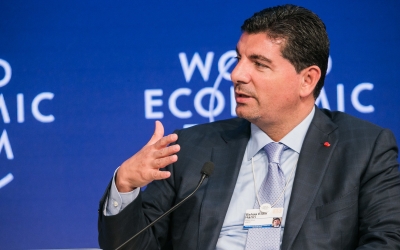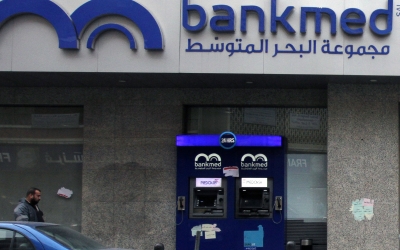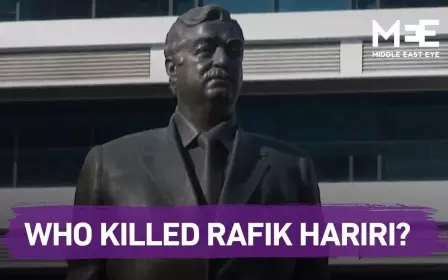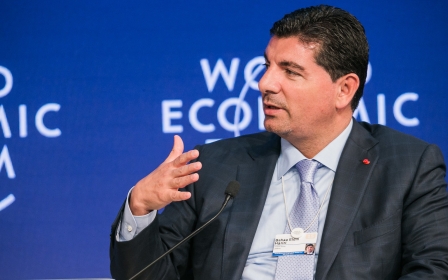Chief defendant in Rafik Hariri killing convicted on all counts by UN-backed tribunal
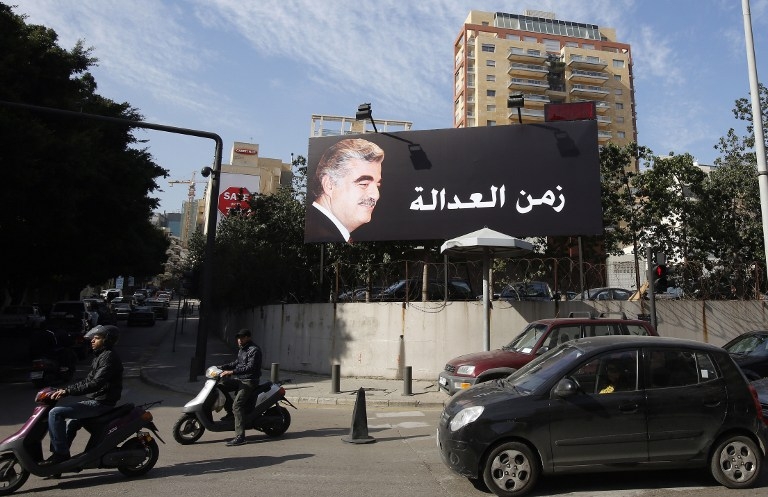
The UN-backed Special Tribunal for Lebanon (STL) on Tuesday found Salim Jamil Ayyash guilty of conspiracy to kill former Lebanese Prime Minister Rafik al-Hariri and 21 others in a 2005 bombing.
There was insufficient evidence against three other men charged as accomplices in the bombing and they were acquitted, the tribunal found.
Judges said they were "satisfied beyond a reasonable doubt" that the evidence showed that Ayyash possessed "one of six mobiles used by the assassination team" and ruled he was guilty of committing a terrorist attack and of murder.
They were also satisfied that the 56-year-old Ayyash "had associations with Hezbollah".
Hariri's son, Saad, also a former Lebanese prime minister, said he accepts the verdict and said it was time for the Iran-backed Hezbollah movement to assume responsibility.
"Hezbollah is the one that should make sacrifices today," he said. "I repeat: we will not rest until punishment is served."
Earlier on Tuesday, the court said there was no evidence the leadership of Hezbollah or the Syrian government were involved in the killing.
Hariri, who had close ties with the United States, Western and Gulf Arab allies, was seen as a threat to Iranian and Syrian influence in Lebanon.
"The trial chamber is of the view that Syria and Hezbollah may have had motives to eliminate Mr Hariri and his political allies, however, there is no evidence that the Hezbollah leadership had any involvement in Mr Hariri's murder and there is no direct evidence of Syrian involvement," said Judge David Re, reading a summary of the court's decision.
Billionaire Hariri's assassination plunged Lebanon into what was then its worst crisis since the 1975-90 civil war, leading to the withdrawal of Syrian forces and setting the stage for years of confrontation between rival political factions.
Hezbollah has denied any involvement in the 14 February 2005 bombing.
The case has been overshadowed by the Beirut blast earlier this month, the largest in Lebanon's history, that killed 178 people and drew outraged demands for accountability.
During the trial, victims spoke powerfully in court about lost family members.
The reading of the verdict, which was scheduled to last six hours, was being broadcast by video, with only a handful of public and press allowed into the courtroom due to the coronavirus pandemic.
'Chief defendant had Hezbollah associations'
DNA evidence showed the blast that killed Hariri was carried out by a male suicide bomber who was never identified.
Prosecutors used mobile phone records to argue that the men on trial, Ayyash, Hassan Habib Merhi, Assad Hassan Sabra and Hussein Hassan Oneissi, carefully monitored Hariri's movements in the months leading up to the attack to time it and to put forward a fake claim of responsibility as a diversion.
Along with Ayyash, judges also said on Tuesday they were satisfied beyond reasonable doubt that Oneissi was the main user of another of the phones.
However, they said they were not satisfied with the evidence linking the phones with the two other suspects, Merhi and Sabra.
Bombing 'mastermind'
The judges said evidence also linked phones to the alleged mastermind of the bombing, Hezbollah commander Mustafa Badreddine - who was indicted by the court but killed near Damascus in May 2016.
Prosecutors said Ayyash was a ringleader of the group, while Oneissi and Sabra allegedly sent a fake video to the Al-Jazeera news channel claiming responsibility on behalf of a made-up group. Merhi had been accused of general involvement in the plot.
While prosecutors had shown that the suspects used mobile phones to coordinate the attack, the judges said on Tuesday that they did not sufficiently connect the suspects to a false claim made immediately after the attack by people who must have known Hariri would be killed.
"The prosecution has therefore not proved its case beyond reasonable doubt [against three suspects'] participation in the false claim of responsibility for the attack on Hariri," said Judge Janet Nosworthy.
Court-appointed lawyers had said there there was no physical evidence linking the defendants to the crime and they should be acquitted.
'Lebanon needs to see law and justice'
Hezbollah leader Sayyed Hassan Nasrallah said on Friday he was not concerned with the trial and that if any members of the group were convicted, it would stand by their innocence.
Hezbollah's Al Manar TV and the pro-Damascus Al Mayadeen channel did not cover the trial, which other broadcasters in Lebanon were airing live.
Beirut tour guide Nada Nammour, 54, speaking before the reading of the verdict began, told Reuters that the crime should be punished.
"Lebanon needs to see law and justice... We were born in war, we lived in war and will die in it, but our children deserve a future," she said.
The verdict in The Hague may further complicate an already tumultuous situation after the 4 August blast and the resignation of the government backed by Hezbollah and its allies.
Port blast in focus
The judgment had initially been expected earlier this month, but was delayed after the port explosion.
The investigation and trial in absentia of the four Hezbollah members has taken 15 years and cost roughly $1bn.
It could result in a guilty verdict and later sentencing of up to life imprisonment, or acquittal.
The hybrid court, with Lebanese criminal law and a mix of international and Lebanese judges, could serve as a model if Beirut decides to prosecute this month's explosion, Reuters reported.
Some Lebanese say they are now more concerned with finding out the truth behind the Beirut port blast.
“I do want to know what the verdict is... but what matters now is who did this [port blast] to us because this touched more people,” Francois, a volunteer helping victims in a ruined district, told Reuters.
Middle East Eye propose une couverture et une analyse indépendantes et incomparables du Moyen-Orient, de l’Afrique du Nord et d’autres régions du monde. Pour en savoir plus sur la reprise de ce contenu et les frais qui s’appliquent, veuillez remplir ce formulaire [en anglais]. Pour en savoir plus sur MEE, cliquez ici [en anglais].


